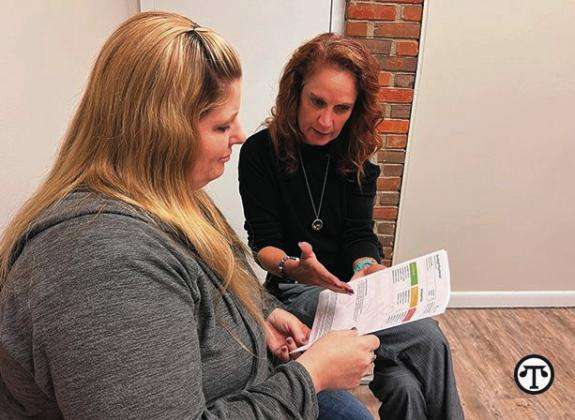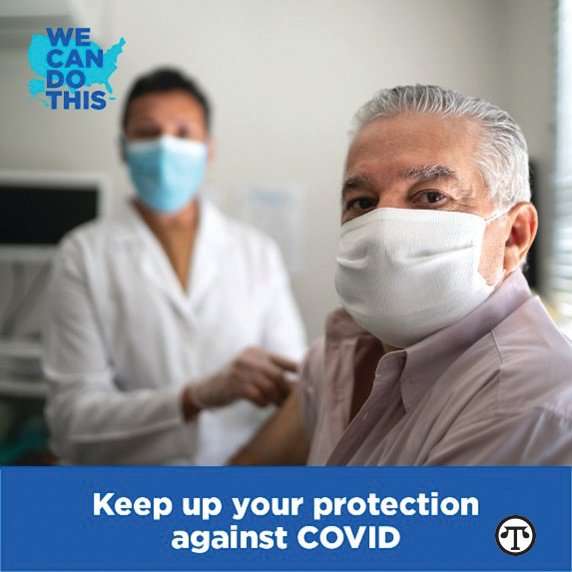FOR YOUR HEALTH: Should you get tested for seasonal allergies?
 You might think that seasonal allergies are just a spring thing. Not true. Autumn brings pollen from the ragweed plant to many parts of the U.S. And if you’re allergic to it, you may find yourself dealing with watery eyes, a runny or stuffy nose and an itchy throat.
You might think that seasonal allergies are just a spring thing. Not true. Autumn brings pollen from the ragweed plant to many parts of the U.S. And if you’re allergic to it, you may find yourself dealing with watery eyes, a runny or stuffy nose and an itchy throat.
Ragweed pollen levels typically peak in mid-September. But depending on where you live, they can hang around until November, according to the American College of Allergy, Asthma & Immunology.
Here’s what you need to know about the symptoms and treatment of ragweed allergies — and when you should see your doctor.
What causes seasonal allergies?
“Seasonal allergies occur when the body’s immune system overreacts to something in the environment, such as pollen,” explains Morris Nejat, MD. Dr. Nejat is the chief medical officer at NY Allergy & Sinus Centers in New York City.
Many times throughout the year, certain plants release pollen. Tree pollen causes problems in the spring, and grass pollen is common in the summer. When fall comes, ragweed pollen takes over.
Seasonal allergies affect as many as 60 million people in the U.S., according to the Centers for Disease Control and Prevention. (Learn why the allergy season is getting longer.)
As pollen travels through the air, it can make its way into your eyes, nose and lungs. Your body may act as if it’s under attack and release a chemical called histamine into your blood. This causes symptoms such as:
- Runny nose
- Red, watery eyes
- Itchy eyes, nose, throat and skin
- Sneezing, coughing and wheezing
- Sinus pressure
- Tiredness
When do you need to get tested for seasonal allergies?
If you think you have seasonal allergies, talk to your primary care doctor. Finding out the cause of your symptoms helps your doctor decide which medications to give you. They will discuss your symptoms and medical history. Your doctor may also refer you to an allergist for testing, if necessary.
“You should get tested for seasonal allergies if you have symptoms that last more than 3 months or if you have chronic sinus infections, nasal congestion or difficulty breathing,” says Dr. Nejat.
A skin prick or scratch test can confirm your allergy, says the Asthma and Allergy Foundation of America. The doctor will place a drop of an allergen (such as ragweed) onto your skin, usually on the forearm. Then they will lightly prick or scratch your skin. You probably won’t find the test painful, but you may have a little discomfort. If your skin gets a red, raised bump, it means you’ve had an allergic reaction.
How to relieve symptoms
Taking an over-the-counter medicine can help relieve your symptoms. Your doctor might recommend:
- Corticosteroid nasal spray. These medications reduce nasal inflammation. Examples include budesonide (Rhinocort®) and fluticasone propionate (Flonase®).
- Antihistamines. These medications block the release of histamines, a chemical your body releases during an allergic reaction. Some examples are Loratadine (Claritin®) and cetirizine (Zyrtec®). (Here’s the difference between Claritin and Zyrtec.)
- Decongestants. Oral decongestants such as pseudoephedrine (Sudafed®) relieve sinus congestion. Oxymetazoline (Afrin®) is a decongestant nasal spray.
“Oftentimes, the same medication comes in both over-the-counter and prescription versions,” says Dr. Nejat. The allergist will be able to decide which medicines are best for you.
You can also try a saline nasal rinse to reduce congestion. Eye drops can calm itchy, red and watery eyes.
No matter what regimen you’re on, always follow the medication’s instructions. For example, decongestant nasal sprays shouldn’t be used for more than 3 days in a row (unless your doctor says otherwise).
Other tips that can help you manage fall allergies
Don’t let allergies keep you from having fun this fall. Making small changes to your daily routine can help you get ahead of ragweed pollen.
- Track the pollen count. You can check pollen counts in your area using the map provided by the National Allergy Bureau.
- Avoid outdoor chores. When the pollen count is really high, steer clear of yard work such as gardening or mowing the lawn. If you do outdoor chores, wear a face mask, says the Mayo Clinic.
- Close the windows. That goes for the doors in your house, too.
- Remove pollen. Change your clothes when you come into your house from the outdoors. Take a shower, and toss the clothing in the laundry to wash away the pollen.
- Breathe clean air. Use air conditioners in your house and car. Consider buying high-efficiency filters. And use dehumidifiers to keep the air dry and breathable.




 You can help keep your smile shining, even when your diet isn’t adequate, by taking vitamin and mineral supplements as you need them.
You can help keep your smile shining, even when your diet isn’t adequate, by taking vitamin and mineral supplements as you need them.

 You can avoid bad breath during holiday gatherings.
You can avoid bad breath during holiday gatherings.

 Working with a team of health care professionals can help you get the diabetes care you need to improve your health.
Working with a team of health care professionals can help you get the diabetes care you need to improve your health.